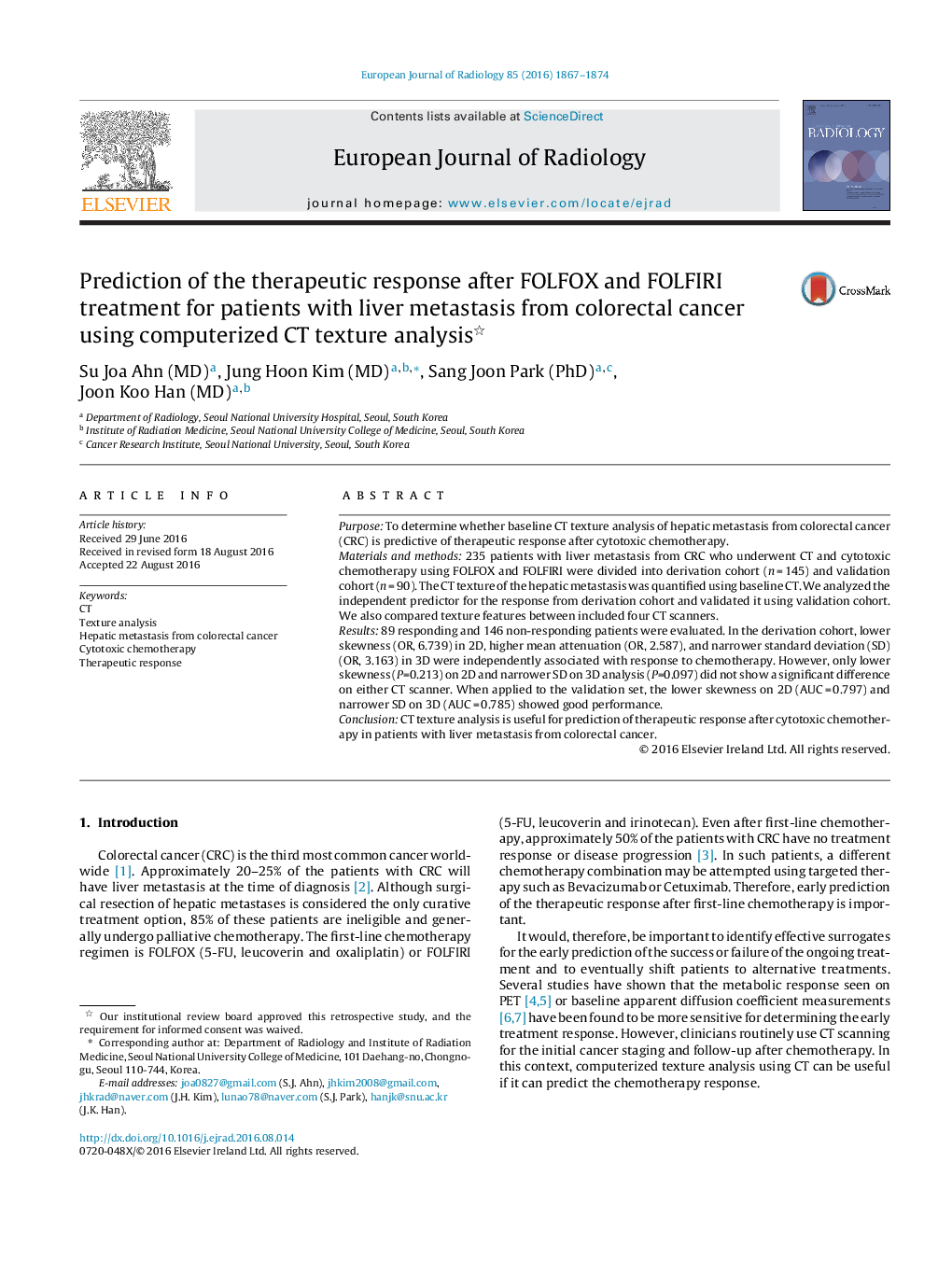| Article ID | Journal | Published Year | Pages | File Type |
|---|---|---|---|---|
| 4224906 | European Journal of Radiology | 2016 | 8 Pages |
PurposeTo determine whether baseline CT texture analysis of hepatic metastasis from colorectal cancer (CRC) is predictive of therapeutic response after cytotoxic chemotherapy.Materials and methods235 patients with liver metastasis from CRC who underwent CT and cytotoxic chemotherapy using FOLFOX and FOLFIRI were divided into derivation cohort (n = 145) and validation cohort (n = 90). The CT texture of the hepatic metastasis was quantified using baseline CT. We analyzed the independent predictor for the response from derivation cohort and validated it using validation cohort. We also compared texture features between included four CT scanners.Results89 responding and 146 non-responding patients were evaluated. In the derivation cohort, lower skewness (OR, 6.739) in 2D, higher mean attenuation (OR, 2.587), and narrower standard deviation (SD) (OR, 3.163) in 3D were independently associated with response to chemotherapy. However, only lower skewness (P=0.213) on 2D and narrower SD on 3D analysis (P=0.097) did not show a significant difference on either CT scanner. When applied to the validation set, the lower skewness on 2D (AUC = 0.797) and narrower SD on 3D (AUC = 0.785) showed good performance.ConclusionCT texture analysis is useful for prediction of therapeutic response after cytotoxic chemotherapy in patients with liver metastasis from colorectal cancer.
